Sometimes the Brontë chronology can seem a little gloomy, but thankfully we are currently in the middle of a group of anniversaries which are joyous ones. Yesterday in 1783 was the birthday of Maria Branwell, who became the mother of the Brontë siblings of course, and in the coming week we have the birthdays of both Charlotte Brontë and her best friend Ellen Nussey. In today’s post, however, we look at yet another happy anniversary which occurred this week – the engagement of Charlotte Brontë and Arthur Bell Nicholls, and how it really came about.
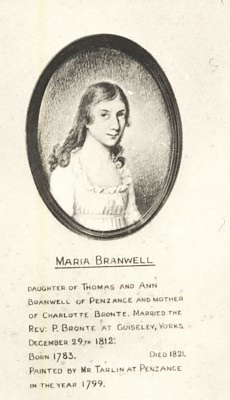
You may remember from previous posts down the years that Arthur, the Irish-born assistant curate to Charlotte’s father Patrick, had initially proposed to Charlotte just before Christmas 1852. He was turned down by Charlotte and both she and her father were furious at him. Charlotte gave this account of the event:
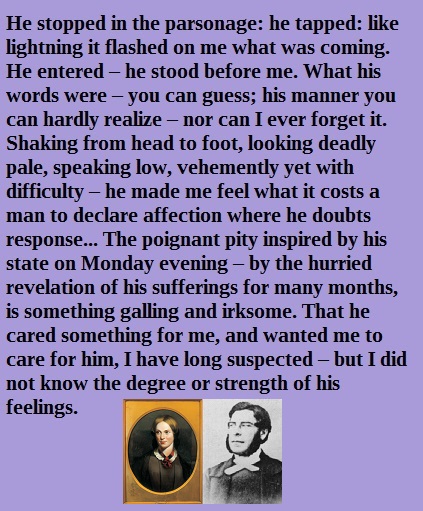
Arthur was devastated, and made plans to leave England and become a missionary in Australia! We know that he sent an application to the Society for the Propagation of the Gospel in January 1853, and that he followed it up a month later as he hadn’t received a reply. We also hear of Arthur’s last service at Haworth. He climbed slowly up to the pulpit, looked out at his congregation and stood shivering unable to speak, until he was led out of the church with the people around him in tears. Charlotte later found him leaning on a garden door, “sobbing as women never sob.”
The parish sexton John Brown called him an “unmanly driveller” and threatened to shoot him if he returned to Haworth, and his daughter, loyal Brontë servant, Martha Brown professed that she hated him. Not a good start for Arthur, so how did it go from there to a letter of 11th April 1854 in which Charlotte writes to Ellen Nussey, “In fact, dear Ellen, I am engaged”?
Fate, as it often does for better or worse, must have played a hand. For some reason, the Society for the Propagation of the Gospel never got back to Arthur, so instead of leaving for Australia he instead became an assistant curate at Kirk Smeaton, 37 miles from Haworth. From there he began a correspondence with Charlotte Brontë, and her attitude to him changed. The result was expressed in this letter, referenced above:
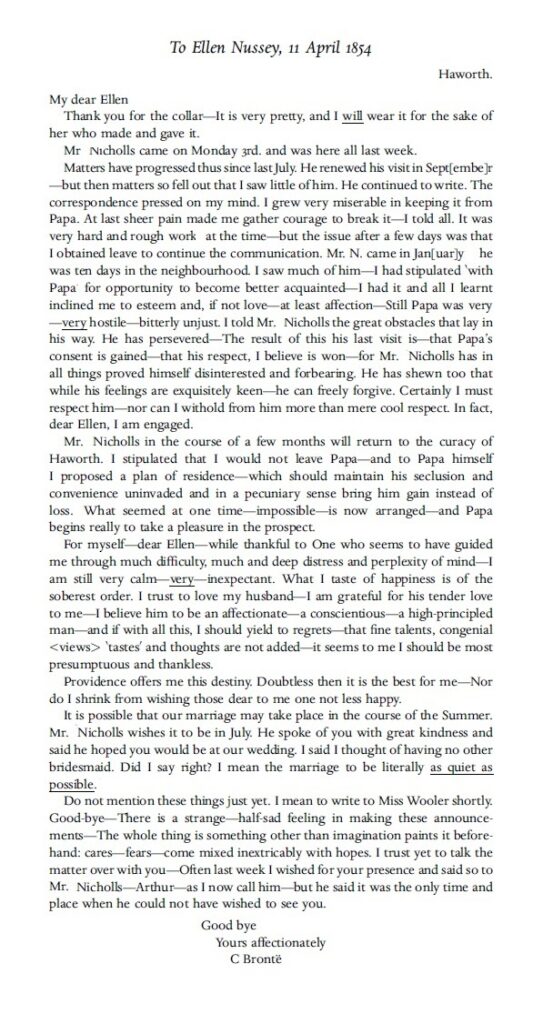
True to the word of her letter to Ellen, Charlotte next wrote to Margaret Wooler, the woman who had once been teacher to both Charlotte and Ellen, and then Charlotte’s employer and by now a great friend and confidante:
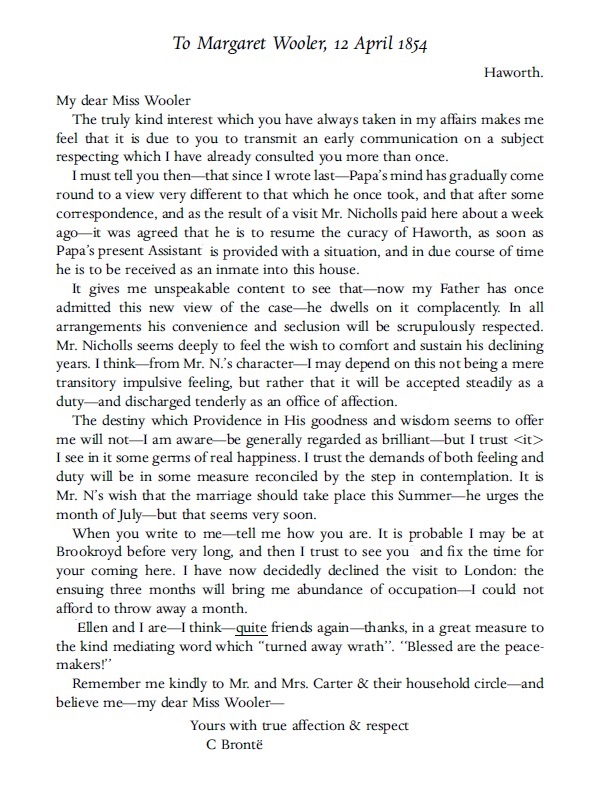
So we see from Charlotte’s own hand how Arthur had proposed and been accepted, and how he had gained the grudging consent of Patrick Brontë on condition that they would both remain in Haworth with Patrick after they were married. What we don’t see is what exactly happened on the 11th of April 1854 – but we have an account of that too, and a fascinating account it is too. In a letter written from Elizabeth Gaskell to her friend John Forster, she reveals the details of the engagement passed to her by Charlotte and which she had not spoken of to either Ellen or Margaret.
There were two,very different, people who gave the course of true love a little assistance in Arthur and Charlotte’s case: Elizabeth Gaskell herself, who had arranged for Arthur to be offered a pension that would make him more financially secure, and a certain old servant who played a vital role in many parts of the Brontë story. Here is Gaskell’s account:
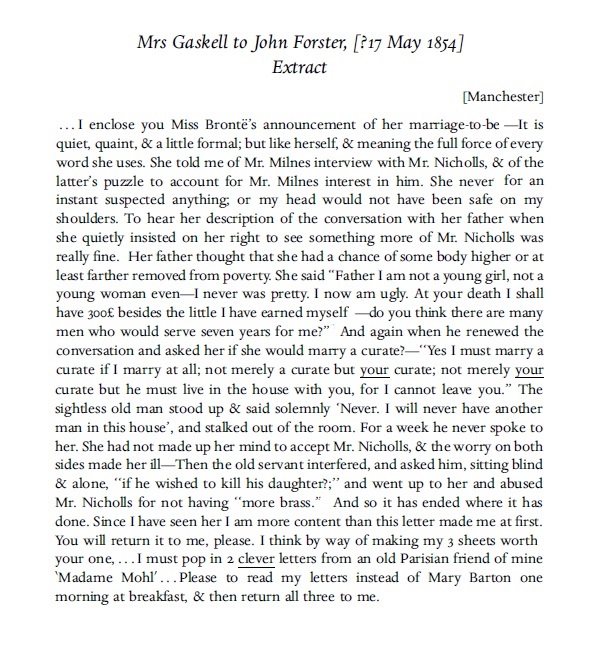
So we now see that both sides were intractable. There was a divide that just could not be crossed, until Tabby Aykroyd banged both their heads together, as they say in Yorkshire. Charlotte and Arthur’s happiness was all too short-lived, but it was a real and profound happiness that Charlotte finally found. Martha Brown, who had been enraged by his initial proposal to Charlotte, came to love Arthur too, and moved with him to Banagher in Ireland when he married for the second time. Love is all you need, as a famous philosopher said, but sometimes it needs a helping hand!
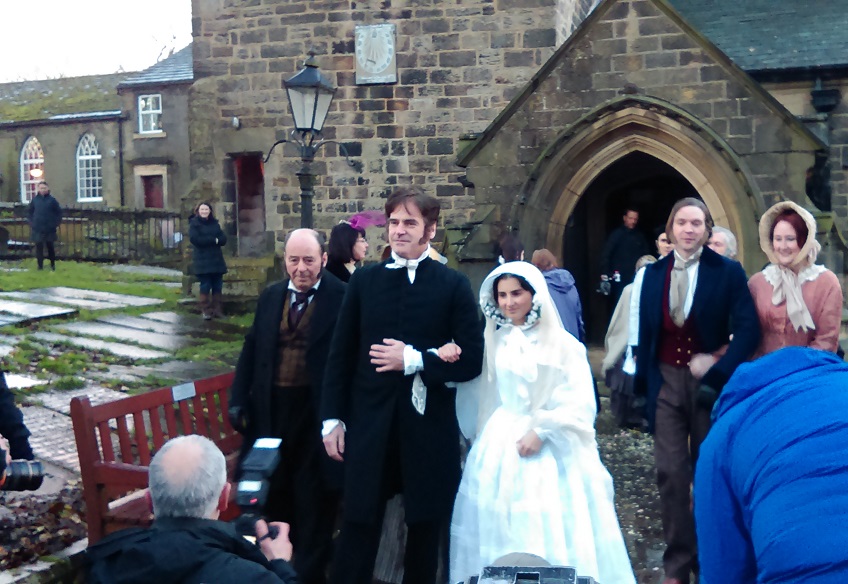
I hope to see you again next week for another new Brontë blog post, and, hurray, it will be another happy one!
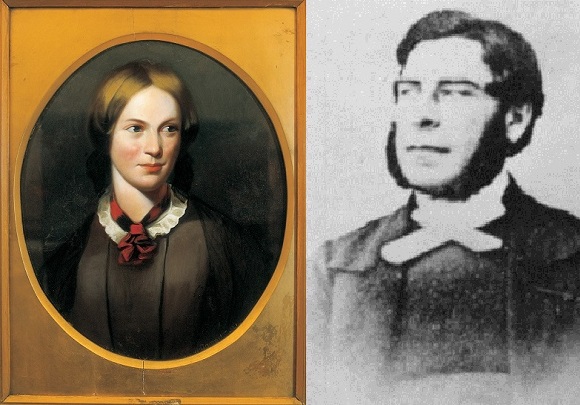
Thank you for enabling us to read and relive those letters. God bless the common sense of that other precious family member Tabitha Ackroyd!
Fascinating as always. What a series of obstacles Mr. Nichols overcame to finally marry Charlotte. He truly loved her.